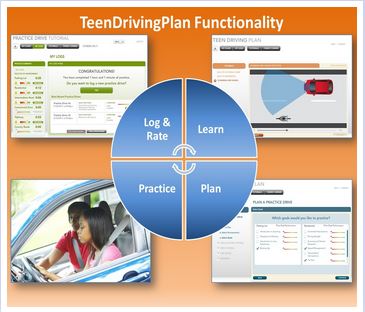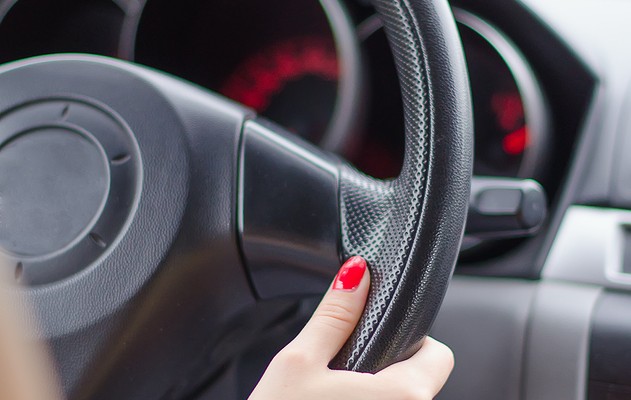
Ask The Driving School Instructor: Aggressive Driving VS Road Rage
July 14, 2014
Question: Is there a difference between aggressive driving and road rage?
Answer: There is definitely a difference between the two. Aggressive driving refers to drivers who seem to be in a great hurry and violate two or more traffic laws at the same time. For instance, an aggressive driver may speed and tailgate at the same time or speed and run a red light. Aggressive drivers are extremely dangerous and if you encounter one, you want to do whatever you can to safely get out of his or her way and let them pass.
While aggressive driving can lead to a road rage situation, being an aggressive driver doesn’t necessarily mean you will become a road rager. Road rage occurs when a driver, for whatever reason, becomes so angry at another driver that he or she wants to physically harm the other driver. Road rage is actually a form of temporary insanity where a driver becomes so enraged that they lose contact with reality and feel it is not only OK to harm another driver but that they can safely get away with it because they feel justified in their actions. Even normally safe drivers can allow themselves to be pushed over that psychological tipping point into a road rage situation if they feel that other drivers are taking advantage of them. Road rage situations happen on a weekly basis in the US and drivers have been killed in all 50 states in road rage incidents.
To avoid a road rage situation, you should be courteous to other drivers at all times. Here are some actions to take to avoid making other drivers angry:
- Never tailgate another driver
- Don’t speed but don’t drive slower than the speed limit either if the roadway is clear ahead.
- Stop at red lights and be ready to go, if the way is clear, as soon as the light turns green.
- Stay out of the left (passing) lane unless you are actually passing another vehicle and then move back to the right lane as soon as it is safe to do so.
- If someone wants to pass, help them by pulling slightly to the right and slowing a little to allow them to pass.
- If someone is tailgating you, let them pass by moving out of their way as soon as it is safe to do so.
- Don’t cut off another driver.
- Put down your cell phone and pay attention to the driving situation.
If you feel you may be in a road rage situation:
- Don’t stop your vehicle unless the traffic situation makes it impossible to move safely.
- Never get out of your vehicle or open your window to speak to the other driver.
- Call 911 immediately and tell them of your situation, make sure the other driver can see you on the phone.
- Don’t try to reason or argue with an enraged driver; they are past the ability to reason and they just want to harm you.
Seat Belt Or No Seat Belt?
July 10, 2014
According to crash data, the number of teens who don’t wear seat belts is on the rise. Check out this video to see the difference between wearing a seat belt or not wearing a seat belt. Remember; the airbag may not always deploy and, if you aren’t wearing your seat belt, the crash forces of your body flying forward against an airbag that is explosively traveling in the other direction can lead to serious injuries. Combined with the proper use of seat belts, the airbag can be a lifesaver.

Use Of Seat Belts By Teens Decreasing
July 9, 2014
The Governors Highway Administration and the Allstate Foundation have teamed up to create a report on the lack of seat belt use by teens. Over the past three years, the number of teens killed in car crashes who weren’t wearing seat belts has increased by up to six percent with more than half not wearing seat belts. The figures are even higher for passengers of teen drivers with more than 60 percent not using seat belts. To read what your state is doing and what you can do to to increase seat belt use by teens, read: Getting It To Click! Connecting Teens And Seat Belt Use

“Teen Driving Program” Improves Teen Driving Performance
July 8, 2014
A study released recently by the Center for Injury Research and Prevention at the Children’s Hospital of Philadelphia (CHOP) showed that the experimental Teen Driving Program (TDP), a web based program that helps parents plan and track their teen’s progress while learning to drive, significantly improved driving performance for teens. The study tracked two groups of teens, one that used the TDP program and one that didn’t. According to the study results:
- “Young drivers that used TDP over a 24-week period were 65 percent less likely to fail a rigorous on-road driving assessment than those not given access to the intervention.
- Overall, six percent of teenagers that used TDP had their on-road driving assessment terminated due to unsafe driving performance as compared to 15 percent of those not given TDP.
- Families who used TDP also reported more driving practice in various environments, at night, and in bad weather.
- TDP increased parent engagement as practice supervisors, practice variety (at least 1-2 hours of practice in all six driving environments), and parent support of teens.”
The program isn’t available to the public yet but, according to a news release put out by CHOP, it will be available later this year. For a video demonstration of the program and to learn more, read: TeenDrivingPlan (TDP)
Photo compliments of: Children’s Hospital Of Philadelphia

Ask The Driving School Instructor: Hands on Steering Wheel
July 7, 2014
Question: My dad told me to hold the steering wheel at the 10 and 2 o’clock position but the manual says to hold it at the 9 and 3 or even 8 and 4 o’clock position. Which one is right?
Answer: I’m reluctant to say your dad is wrong but he’s probably teaching the skills he was correctly taught before airbags were a common feature in cars and that information is no longer valid.
Imagining the steering wheel as a clock face, most driving manuals recommend holding the steering wheel at the 9 and 3 o’clock or even lower at the 8 and 4 o’clock position. This serves two functions. First, it prevents the driver from turning the wheel too sharply. If a distracted driver should run off the road, the natural tendency is to automatically steer sharply back onto the road. This is how so many teens get killed and injured when they lose control of their vehicle.
The second reason for holding the wheel at those positions is to protect your hands and arms if the airbags should deploy. In a crash, the airbags deploy at 200 mph in one-tenth of a second. If your hands are high on the wheel, they can be injured when the airbag deploys. To avoid injury to your arms and hands if the airbag should deploy, keep your hands lower, your knuckles on the outside of the wheel and your thumbs resting on the rim of the wheel – not wrapped around the wheel.
